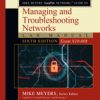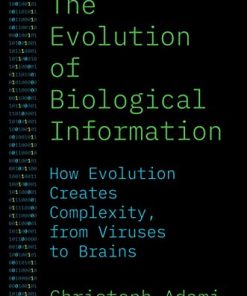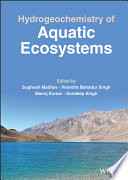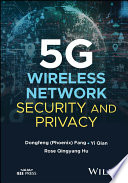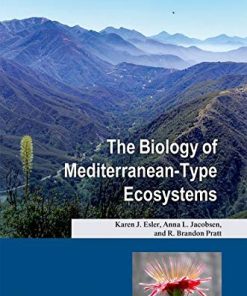(EBook PDF) Evolution of Wireless Communication Ecosystems 1st edition by Suat Secgin 1394182333 9781394182336 full chapters
$50.00 Original price was: $50.00.$25.00Current price is: $25.00.
Evolution of Wireless Communication Ecosystems 1st edition by Suat Secgin – Ebook PDF Instant Download/DeliveryISBN: 1394182333, 9781394182336
Full dowload Evolution of Wireless Communication Ecosystems 1st edition after payment.
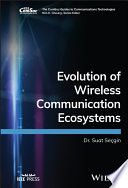
Product details:
ISBN-10 : 1394182333
ISBN-13 : 9781394182336
Author: Suat Secgin
Since the advent of the internet, few technologies have proven more transformative than wireless communication. Never have we lived in a more comprehensively connected world, with the cloud and the coming sixth generation (6G) of wireless technology creating a vast and interconnected communications infrastructure. Global citizens of this newly interconnected reality are grappling like never before with its many challenges.
Evolution of Wireless Communication Ecosystems 1st Table of contents:
1 Basіc Concepts
1.1 Introduction
1.2 Main Components of Communication Systems
1.3 Circuit, Packet, and Cell Switching
1.4 Duplexing in Communication
1.5 Historical Developments of Wireless Communication Systems
Reference
2 Modulation and Demodulation
2.1 Introduction
2.2 What Are Modulation and Demodulation?
2.3 Analog Modulation Methods
2.4 Digital Modulation Methods
References
3 Multiplexing Methods
3.1 Introduction
3.2 Frequency Division Multiplexing
3.3 Time Division Multiplexing
3.4 Orthogonal Frequency Division Multiplexing
3.5 Non‐Orthogonal Multiple Access
3.6 Wavelength Division Multiplexing
3.7 Code Division Multiplexing
3.8 Spatial Division Multiplexing
3.9 Orbital Angular Momentum Multiplexing
3.10 Polarization Division Multiplexing
References
4 Network Performance Metrics
4.1 Introduction
4.2 Spectral Efficiency
4.3 Important Network Performance Metrics
References
5 Seven Layers of ISO/OSI
5.1 Introduction
5.2 Application Layer
5.3 Presentation Layer
5.4 Session Layer
5.5 Transport Layer
5.6 Network Layer
5.7 Data Link Layer
5.8 Physical Layer
References
6 Cellular Communication and 1G Systems
6.1 Introduction
6.2 A Brief History of Wireless Communication
6.3 Cellular Communication
6.4 1G Systems
References
7 2G Systems
7.1 Introduction
7.2 1G and 2G Comparisons
7.3 2G Architecture
7.4 Detailed Infrastructure and 2.5G
References
8 3G Systems
8.1 Introduction
8.2 2G and 3G Comparison
8.3 3G Architecture
References
9 4G Systems
9.1 Introduction
9.2 Toward 4G
9.3 Services and Servers
9.4 Architectural Structure and Novel Concepts
9.5 Voice over LTE (VoLTE)
9.6 Mobile IP
9.7 Multiple Access Techniques
9.8 Multiple Input‐Multiple Output (MIMO) Antenna Systems and SDM Access
9.9 Voice over WiFi (VoWiFi)
References
10 5G Systems
10.1 Introduction
10.2 5G Cell Structure
10.3 Topology
10.4 Millimeter Wave
10.5 Network Slicing
10.6 Massive MIMO and Beamforming
10.7 Carrier Aggregation (CA) and Dual Connectivity (DC)
References
11 6G Systems
11.1 Introduction
11.2 Network
11.3 Terahertz Communication
11.4 Visible Light Communication
11.5 Satellite Integration
11.6 Cloud Radio Access Network
11.7 Holographic MIMO Surfaces
11.8 Massive Cell‐Free MIMO
11.9 Mobile Cloud Computing (MCC)–Mobile Edge Computing (MEC)
11.10 ML, AI, and Blockchain Usage in 6G
11.11 Quantum Computing in Future Wireless Networks
11.12 5G Concepts in 6G (eMBB, uRLLC, and mMTC)
11.13 6G Use Cases
11.14 Comparison of 5G and 6G Network Architectures
References
12 Internet of Things (IoT)
12.1 Introduction
12.2 IoT Vision
12.3 Architecture and Communication Model
References
13 Non‐IP‐Based WPAN Technologies
13.1 Introduction
13.2 802.15 Standards
13.3 Radio Frequency Identification
13.4 Near‐Field Communication
13.5 Infrared Data Association
13.6 Bluetooth
13.7 Zigbee
13.8 Z‐Wave
13.9 Power Line Communication
References
14 IP‐Based WPAN and WLAN
14.1 Introduction
14.2 HaLow WiFi (Low‐Power WiFi)
14.3 ISA 100.11a Wireless
14.4 Wireless Highway Addressable Remote Transducer Protocol (HART)
14.5 Wireless Networks for Industrial Automation‐Process Automation (WIA‐PA)
14.6 6LoWPAN
14.7 WPAN with IP Thread
References
15 Low‐Power Wide‐Area Networks
15.1 Introduction
15.2 General Architecture
15.3 EC‐GSM‐IoT
15.4 Random Phase Multiple Access
15.5 DASH7
15.6 Long‐Term Evolution for Machines
15.7 Narrowband IoT
15.8 Massive IoT
15.9 IoTivity
15.10 LoRa and LoRaWAN
15.11 Sigfox
References
16 IoT Edge to Cloud Protocols
16.1 Introduction
16.2 Message Queue Telemetry Transport Protocol
16.3 MQTT over WebSockets
16.4 MQTT for Sensor Networks
16.5 Constrained Application Protocol
16.6 Embedded Binary HTTP
16.7 Lean Transport Protocol
16.8 Advanced Message Queuing Protocol
16.9 Data Distribution Service
16.10 Simple Text‐Oriented Messaging Protocol
16.11 Extensible Messaging and Presence Protocol
16.12 Lightweight M2M
16.13 Health Device Profile Protocol (Continua HDP)
16.14 Devices Profile for Web Services
16.15 Protocol Comparisons
References
17 Popular Operating Systems of IoT
17.1 Introduction
17.2 OpenWSN
17.3 TinyOS
17.4 FreeRTOS
17.5 TI‐RTOS
17.6 RIOT
17.7 Contiki OS
References
18 IoT Security
18.1 Introduction
18.2 Limitations in IoT End Devices
18.3 Security Requirements
18.4 Attack Types and Points
References
19 IoT Applications
19.1 Introduction
19.2 Tactile Internet
19.3 Waste Management
19.4 Healthcare
19.5 Smart Agriculture and Smart Water Supply
19.6 Web of Things (WoT)
People also search for Evolution of Wireless Communication Ecosystems 1st:
evolution of communication in animals
evolution of wifi standards
evolution of communications
evolution of wireless security
evolution of wifi
You may also like…
Animals & Pets - Plants & Fungi
Biology and other natural sciences - Biology
Earth Sciences - Mineralogy
Computers - Networking
Security in Wireless Communication Networks 1st Edition Yi Qian
Biology and other natural sciences - Ecology
Engineering
Multifunctional Antennas and Arrays for Wireless Communication Systems (Wiley – IEEE) 1st Edition
Computers - Networking
Uncategorized
The Biology of Mediterranean-Type Ecosystems (Biology of Habitats Series) Karen J. Esler



